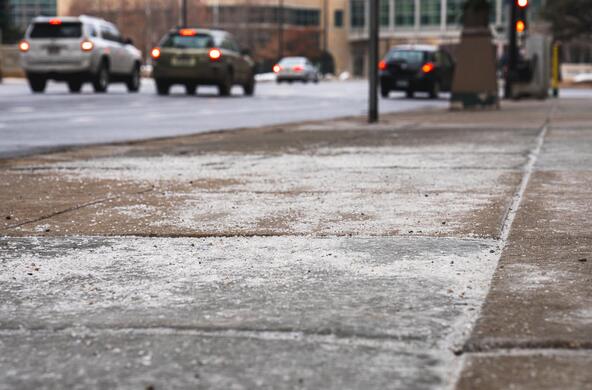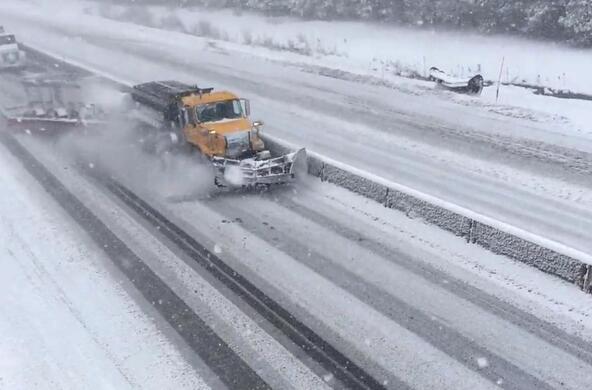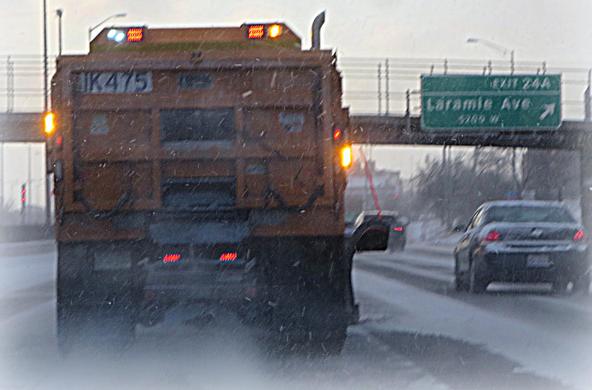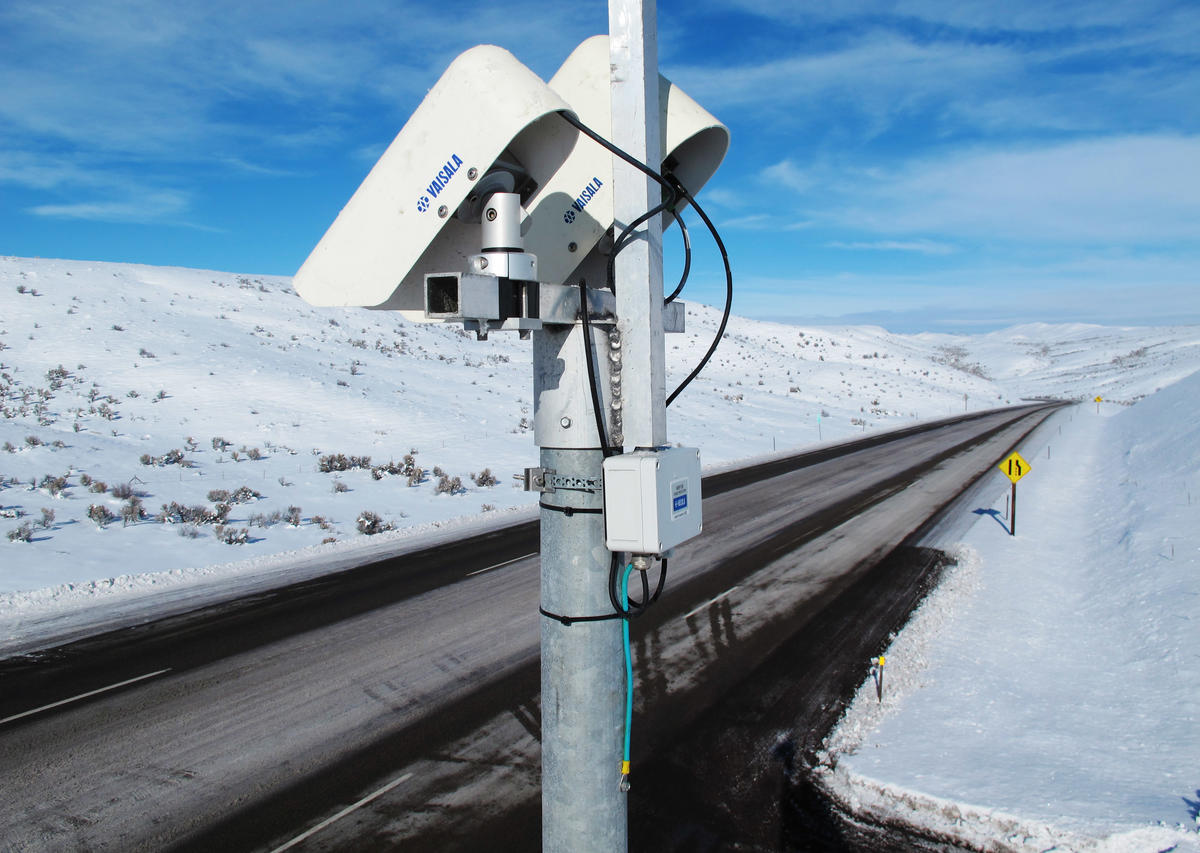
From the 2019 Cary report Road Salt: The Problem, The Solution, and How to Get There
Be a part of the solution
In the 1970s, transportation agencies began to recognize that using large quantities of road salt could harm the environment and infrastructure. Since then, much research has been done to document and improve best management practices for maintaining ice-free roads. Remaining on top of the latest equipment and techniques can be challenging. However, organizations such as Clear Roads have improved opportunities for discovering and implementing accessible methods of salt reduction.
Best management practices for reducing road salt
Anti-icing
Many departments of transportation have begun using a 23% salt brine solution to pre-treat roads before the onset of storms. Estimates suggest that road pre-treatment with brine can yield a 75% savings in total salt applied
Pre-wetting
Pre-wetting salt before roadway application can reduce salt infiltration to aquifers by 5%. Pre-wetting salt allows it to stick better to the road, which minimizes spray and kick-up of salt grains.
Calibration of equipment
Calibration allows you to measure the exact amount of material you apply, facilitating more accurate and efficient deicing, with less total salt used. You don’t need a regulator to calibrate your equipment.
Calibration procedures – which are readily available in online manuals – should be a standard component of trainings for salt truck operators.

Variable application rates for salt distribution systems
Automated spreader controls allow salt truck operators to program salt application rates so that the amount of salt being applied changes with ground speed, which reduces bounce and scatter. These programs can also account for curves and hills, which require more salt than flat or straight roads. Vehicle location sensors can target salt distribution to a precise location along a route. This kind of information can allow for fine adjustments and keep track of total salt distribution for salt monitoring purposes.
Proper salt storage
To minimize salt loss and pollution, salt piles should be contained. Municipalities and privately- owned facilities can protect salt investments and the environment by adopting storage best practices. These include building salt storage sites on impervious surfaces, implementing secondary containment measures, completely enclosing salt piles, and regularly inspecting structures for breaks or tears.
Good housekeeping
Unintended spills and releases of road salt from vehicles are inevitable. Allowing time to clean up spills will reduce unwanted release of salt to the environment. Also, collection systems are now available to promote the recycling of vehicle wash water, which can be used to produce brine for anti-icing applications.
Road condition information systems
High quality data on road and weather conditions should be shared between transportation officials and weather forecast providers to facilitate targeted, coordinated road salt application. In addition, smart phone apps, cell phone text alerts, and web-based platforms are increasingly allowing travelers to make informed decisions about road conditions before travelling.
Plow types
Modern plows are designed to reduce the amount of road salt needed to maintain ice-free roads. For example:
- Live edge blades have articulated segments that conform to uneven road surfaces.
- Flexible plow blades conform to uneven surfaces thus reducing the overall amount of salt needed. They also extend the life of a plow
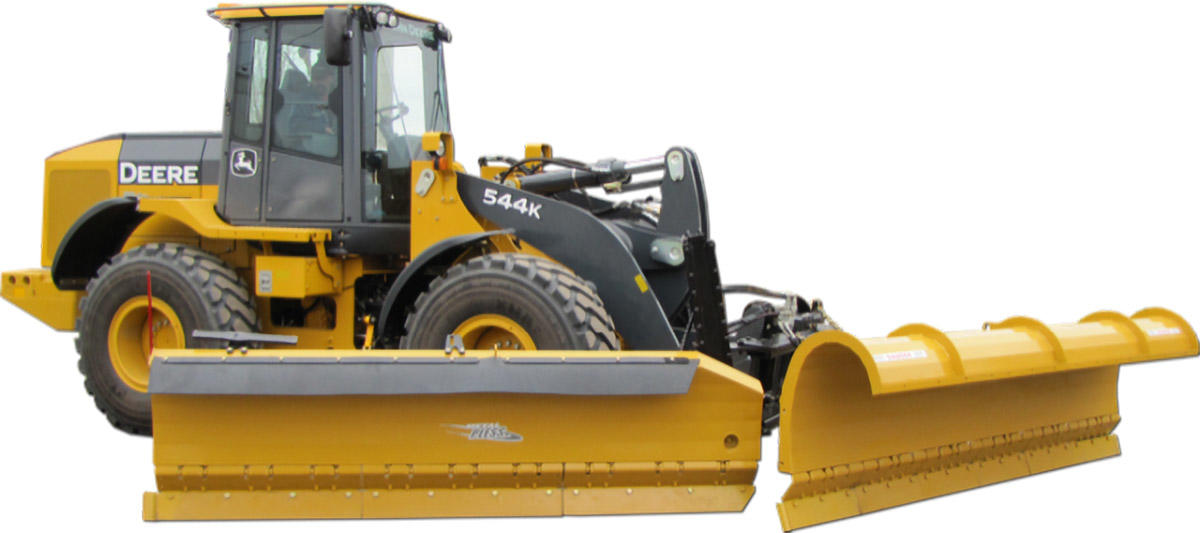
Pavement temperature sensors
Pavement temperature determines whether frozen precipitation will stick and how much salt is needed to maintain safe roads. They can help guide salt application by road crews and inform the public about the safety of road conditions.
Adjusting levels of service
Several states adjust levels of service to conditions. For example, the Vermont Transportation Department seeks to provide ‘safe roads at safe speeds’ – not necessarily bare roads. New Hampshire, Ohio, Colorado, and other states define varying levels of service based on traffic volume.
Surveys can help gauge the public’s expectations and comfort level with varying levels of service. For example, after surveying the public, the Minnesota Department of Transportation was able to adjust its practice of maintaining bare pavement during a storm to maintaining bare lanes.
Expanding the practice of adjusting levels of service to match expectations and traffic volume has the potential to drastically reduce the overall amount of salt released into the environment.
Identify no / low salt areas
Some road service agencies have identified areas of low or no salt near sensitive freshwater bodies such as reservoirs, lakes, rivers, streams, and well fields that feed public water supplies. Educating travelers in these areas is critical.
Road salt alternatives
Alternative salt-based deicers have changed very little in recent years. Interest in agro-based alternatives has expanded greatly although salt is the active ingredient in most of these products. Products include:
- Corn steepwater (a byproduct of wet corn milling)
- Cheese and pickle brine
- Fermentation byproducts (i.e., from beer and wine waste)
- De-sugared molasses (a byproduct of sugar beet processing)
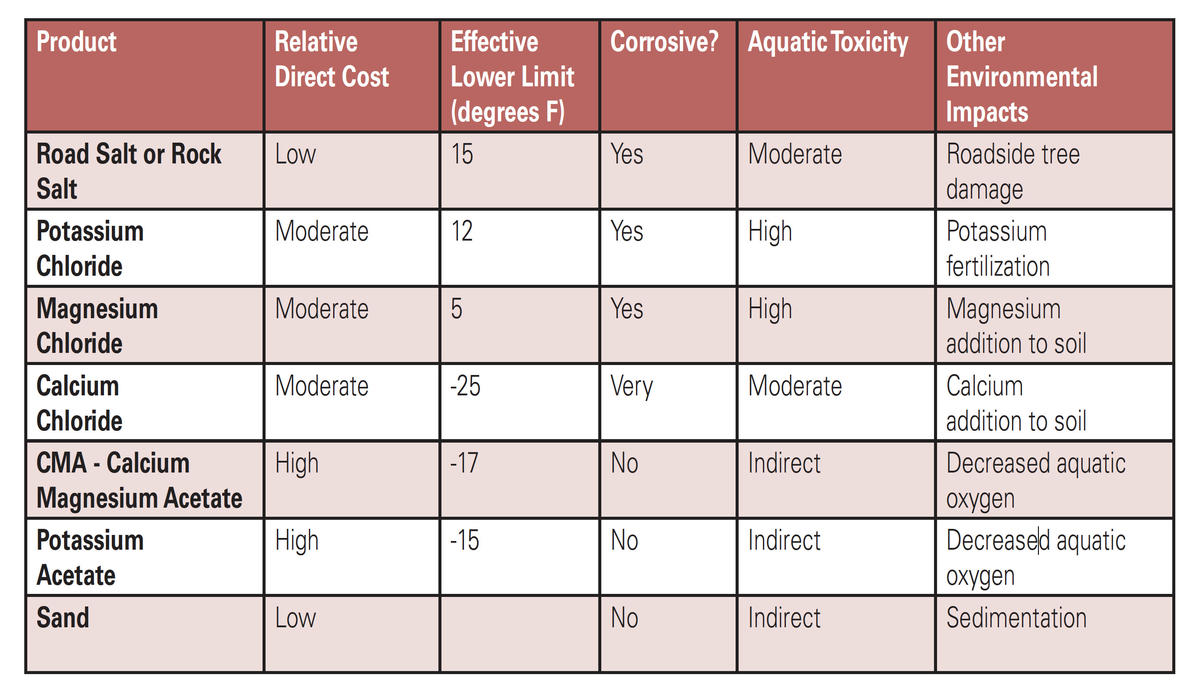
Agro-products can lower the freezing point of chloride-based salts and increase the amount of time salts remain on pavement. They can also improve sunlight absorption and reduce the corrosivity of salt solutions. When washed into streams and lakes, many agro-based deicers have an impact, as would be expected when any organic material (such as wastewater) is released into a water body. High levels of organic material can deplete oxygen, stimulate algae, and cause fishkills.
These agro-based deicers also tend to be more expensive. Other alternatives to rock salt include different types of salt or sand, which vary in effectiveness and impact.
Impediments to best management practices and suggestions for how to overcome them
Up front cost of new equipment
Even with an attractive cost-benefit analysis, some municipalities or contractors may not have the financing to cover the costs of new equipment.
Suggestions:
- Consolidate services. Share the cost and use of a new salt storage facility or piece of equipment.
- Concessionary financing. Low- or no-interest rate loans from public or private sources could allow municipalities to purchase new equipment. Savings from the reduction of salt use would allow for a short time frame for pay back.
Private contractors
Snow maintenance at shopping centers, hospitals, schools, apartment complexes, and private businesses is largely handled by contractors who may have a disincentive to reduce salt use for a variety of reasons.
Suggestions:
- Liability relief. New Hampshire instituted a program that provided private contractors relief from liability in exchange for attending classes on responsible salt use.
- Customer education. Encourage businesses to develop sustainability practices for storefronts, including reduced salt use. If businesses have sustainability plans, encourage the addition of salt reduction strategies.
- Consider regulations of salt storage for all entities. For example, Wisconsin requires salt/sand piles greater than 1000 pounds to be stored in a structure with a roof and walls substantial enough to prevent precipitation from contacting salt, or wind from carrying salt into surface waters. Connecticut requires salt piles in place for more than 180 days per year to be kept in a permanent, roofed structure.
Level of service
Public expectation and laws that mandate the level of service required of road service agencies often dictate the amount of salt that is used. For example, Section 12 of the New York Highway Law says that snow and ice should be controlled to provide reasonable passage and movement of vehicles. This ambiguous language can be interpreted widely by travelers and highway crews.
Suggestions:
- Survey the public. Find out if a lower level of service would be acceptable on some roads.
- Engage policymakers. Refine or change the laws to allow for flexibility in level of service and to clearly indicate expectations and reduce liability costs.
Salt purchasing
Annual budgeting requirements, especially for some small municipalities, may result in standardized salt use every year, even if conditions in some years don’t warrant use of the standard amount of salt.
Suggestions:
- Consider a multi-year contract.
- Expand storage capacity. Allow for annual variability in severity of conditions. Storage capacity expansion would allow excess salt to be stored for future use. (See examples in: Clear Roads Best Management Practices for road salt in winter maintenance.)
Research
In order to assess the efficacy of new technology and practices, data collection and monitoring are needed.
Suggestions:
- Join or follow consortia like Clear Roads.
- Build data collection into management plans.
Suggested resources
Best Management Practices for Salt Reduction — NH Dept. Environmental Services best management practices documents developed as part of a survey of the best and most applicable technology.
Clear Roads newsletter — National research consortium Clear Roads, which focuses on testing winter maintenance materials, equipment, and methods.
Clear Roads Best Management Practices — Clear Roads manual for road salt winter maintenance.
Snow and Ice Management Association (SIMA) – Trade organization offfering resources and information for private snow and ice management professionals.

